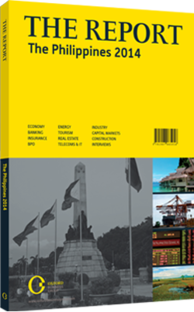Ratings boost: A necessary upgrade for investment and banks
Citing solid growth, political stability, greater accountability and a low level of exposure to external shocks, Moody’s has joined Standard & Poor’s and Fitch in assessing the Philippines’ sovereign credit rating as investment grade, with the agency holding out the possibility of a further upgrade. On October 3, 2013 Moody’s announced it was raising the country’s sovereign rating one level from “Ba1” to “Baa3”, the lowest rung on the investment-grade ladder. The Moody’s decision follows on similar moves by Fitch and Standard & Poor’s, which lifted the Philippines to investment level in March and May 2013, respectively.
IMPROVED PROSPECTS: The agency said that better fiscal management and budgetary deficits less than the “Baa3”-rated median meant that the government was building a strong platform for future growth and economic stability. The Philippines has also managed to transition much of its financing to medium- and long-term domestic debt, reducing exposure to foreign capital flows. “The stability of the Philippines’ funding conditions – during the recent bout of market volatility in emerging markets – points to the country’s relative lack of vulnerability to external financial shocks,” the Moody’s statement said. Moody’s also held out the prospect of a further upgrade in the sovereign credit rating by saying that the outlook for the economy was “positive”, a position that reflects the expectation of continued outperformance by the Philippines relative to it peers.
One of the factors that prompted Moody’s to raise its assessment of the Philippines economy was its continued strong growth, with GDP expanding by 6.8% in 2012. “The Philippines’ economic performance has entered a structural shift to higher growth, accompanied by low inflation,” Moody’s said. “These levels are among the fastest rates of growth in the Asia-Pacific and across emerging markets globally.”
The economy expanded at an annualised rate of 7.6% in the first half of 2013, with analysts predicting growth of least 7% for 2013. This would be above the average for the region, according to the latest projections from the Asian Development Bank, which in early October 2013 lowered its average regional GDP growth rate to 6%, down from 6.6% earlier in the year.
GOVERNMENT RESPONSE: Filipino officials welcomed the Moody’s decision, with presidential spokesman Ricky Carandang saying the upgrade reflected the global community’s continued confidence in the government’s fiscal management. According to Amando Tetangco, governor of the Bangko Sentral ng Pilipinas, the upgrade should boost confidence among domestic investors, as well as those from overseas. “Clearly Moody’s has acknowledged the strong upside potential and the constructive dynamics of the economy that should enable it to ride out the volatilities in global financial markets,” Tetangco said following the announcement. “This ... should bode well for more investments, both local and foreign, in the country.”
Though the Moody’s report did carry a number of warnings, saying that the government’s revenue generation remains weak compared to other investment-grade countries and that sovereign debt as measured against GDP will remain higher than most similarly rated peers. The report also said that macroeconomic instability could exert downward pressure on the rating, but that a downgrade is unlikely in the short term.
FLOW-ON EFFECT: The local banking sector received a boost from the upgrade, with Moody’s raising the rating of four lenders – Banco de Oro Unibank, Bank of the Philippine Islands, Land Bank of the Philippines, and Metropolitan Bank and Trust Co. – to investment grade on the same day. In announcing its decision, the ratings agency cited an improved operating environment, as well as the sovereign debt upgrade. The systemic importance of the four lenders means that the government would be quick to support them in times of stress, and a strengthened credit rating would certainly help the state source any necessary funds should the need arise. Moreover, all four institutions hold high levels of government debt, increasing the correlation between the state’s financial health and the lenders.
You have reached the limit of premium articles you can view for free.
Choose from the options below to purchase print or digital editions of our Reports. You can also purchase a website subscription giving you unlimited access to all of our Reports online for 12 months.
If you have already purchased this Report or have a website subscription, please login to continue.

